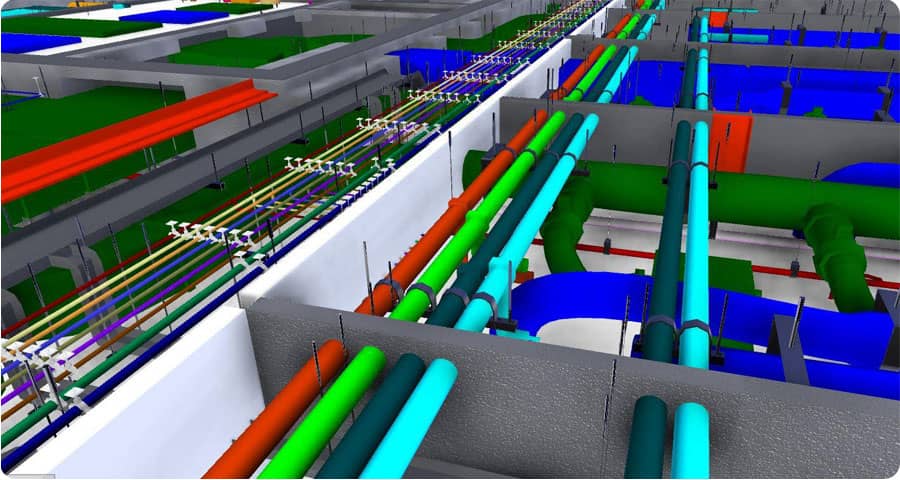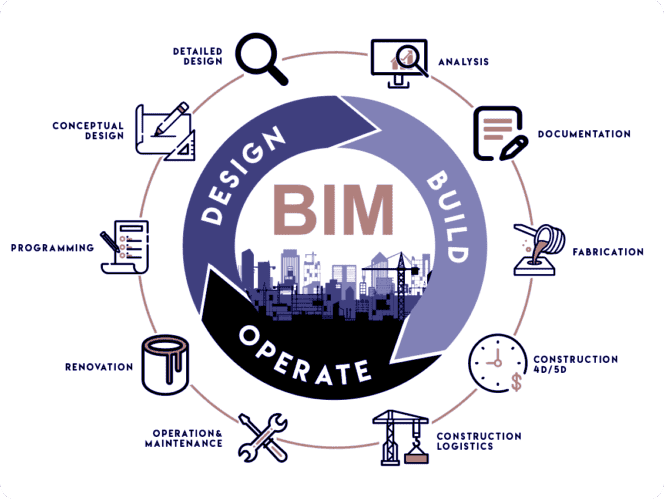
Transformative Strategies with Value Engineering Service in BIM
In the ever-evolving landscape of construction and design, harnessing innovative strategies is not just a choice; it is a necessity.
Navigating the Digital Terrain: BIM as a Cornerstone
The Digital Backbone
BIM serves as the digital backbone of modern construction projects. Its three-dimensional, data-rich models transcend traditional design processes, offering a comprehensive overview of the entire project. This digital representation not only enhances visualization but also lays the groundwork for effective collaboration and informed decision-making.
Streamlined Workflows
One of BIM's undeniable strengths lies in its ability to streamline workflows. From conceptualization to construction, BIM facilitates a seamless flow of information, reducing inefficiencies and minimizing errors. This holistic approach significantly contributes to project timelines and overall success.
Why choose Value Engineering Service in BIM?
Cost Optimization and Efficiency:
Value Engineering Service in BIM empowers stakeholders to optimize costs without compromising quality. Through detailed data analysis and simulations, potential cost-saving opportunities can be identified early in the project lifecycle. This proactive approach ensures that financial resources are utilized efficiently, contributing to the overall economic viability of the project.
Enhanced Collaboration and Communication:
BIM, as a collaborative platform, encourages real-time communication and synergy among project stakeholders. By integrating Value Engineering Service, this collaboration is amplified, creating an environment where diverse perspectives converge to optimize project design and functionality. Improved communication fosters better decision-making, reducing the likelihood of misunderstandings or discrepancies.
Informed Decision-Making with Data:
The fusion of BIM and Value Engineering Service enables data-driven decision-making. Project stakeholders can leverage the wealth of data within the BIM model to analyze different scenarios and their impact on project performance. This analytical approach ensures that decisions are based on concrete information, enhancing the likelihood of successful project outcomes.
Risk Mitigation and Resilience:
Value Engineering Service in BIM goes beyond cost optimization; it also addresses risk mitigation. The digital representation of the project allows for thorough risk assessments and the development of strategies to mitigate potential challenges. This proactive risk management approach enhances the project's resilience, ensuring it can withstand unforeseen obstacles.
Innovation and Creativity Unleashed:
BIM, coupled with Value Engineering Service, fosters an environment where innovation and creativity are actively encouraged. Stakeholders can explore unconventional solutions, challenge traditional norms, and experiment with groundbreaking ideas. This innovation-driven approach not only sets the project apart but also contributes to its long-term success.
Sustainability Integration:
As sustainability becomes a cornerstone of modern construction projects, Value Engineering Service in BIM facilitates the seamless integration of environmental considerations. The digital model allows for comprehensive analysis of materials, energy consumption, and overall environmental impact. By prioritizing sustainability, projects align with global initiatives and future-proof themselves against evolving environmental regulations.
Holistic Life Cycle Perspective:
Value Engineering Service extends its impact beyond the construction phase by considering the entire project lifecycle. BIM's ability to capture and store data facilitates ongoing performance monitoring, maintenance planning, and future renovations. This holistic perspective ensures that decisions made during the construction phase contribute to the project's long-term operational efficiency and value.
Competitive Advantage:
In a competitive industry, staying ahead requires adopting cutting-edge methodologies. Choosing Value Engineering Service in BIM provides a competitive advantage by ensuring projects are not just constructed but optimized for efficiency, innovation, and sustainability. Clients and stakeholders increasingly value projects that prioritize these elements, giving organizations an edge in the market.
Regulatory Compliance:
Many regions are incorporating BIM requirements into their construction regulations. By choosing Value Engineering Service in BIM, stakeholders position themselves to meet these evolving regulatory standards. This proactive compliance not only avoids potential legal challenges but also showcases a commitment to staying abreast of industry best practices.
Client Satisfaction and Project Success:
Ultimately, the amalgamation of BIM and Value Engineering Service contributes to client satisfaction and overall project success. Clients benefit from optimized costs, sustainable practices, and innovative solutions, ensuring that their expectations are not just met but exceeded. This satisfaction enhances the reputation of individuals and organizations within the industry.
The Synergy of Value Engineering and BIM
Strategic Cost Optimization
Value Engineering, when integrated into the BIM framework, becomes a strategic ally in cost optimization. It goes beyond cost-cutting measures; it's about identifying alternatives that not only reduce expenses but enhance the project's overall value. This synergy ensures that every penny spent contributes meaningfully to the project's success.
Enhanced Collaboration in Action
Collaboration lies at the heart of successful projects, and the combination of BIM and Value Engineering amplifies this ethos. Through shared digital platforms and collaborative tools, multidisciplinary teams can synergize their efforts, fostering an environment where diverse perspectives converge for innovative problem-solving and decision-making.
Proactive Risk Mitigation
The marriage of BIM and Value Engineering introduces a proactive approach to risk mitigation. Potential challenges are identified early in the project lifecycle, allowing teams to develop robust contingency plans. This foresight not only safeguards the project from unforeseen hurdles but also ensures a more predictable and controlled progression.
The Continuous Evolution
In conclusion, the integration of Value Engineering Services within the BIM landscape signifies a paradigm shift in project management. Beyond the streamlined workflows and cost efficiencies, it cultivates a culture of collaboration and innovation. Embrace these transformative strategies, navigate the digital terrain, and witness the evolution of success in your construction and design endeavors.

